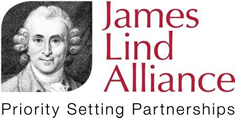Asthma Top 10
- a) What are the adverse effects associated with long term use of short and long actingbronchodilators; inhaled and oral steroids; and combination and additive therapies in adults? (N.B this includes children aged 12 years old and over)?
b) What are the adverse effects associated with long term use of short and long acting bronchodilators; inhaled and oral steroids; and combination and additive therapies in children? - What is the most effective way of managing asthma with other health problems?
- What are the key components of successful "Self Management" for a person with asthma?
- What is the most effective strategy to educate people with asthma and health professionals about managing the adverse effects of drug therapies?
- What is the most effective way of managing asthma triggers?
- What is the role of complementary therapies in asthma management?
- What are the benefits of breathing exercises as a form of physical therapy for asthma?
- What type of patient (children and adults) and health professional education is most effective in gaining asthma control?
- What is the most effective way to manage consultations and asthma control in adolescents and young people?
- Psychological interventions for adults with asthma?
Document downloads
For full details of all of the questions identified by this PSP, please see the document below.

